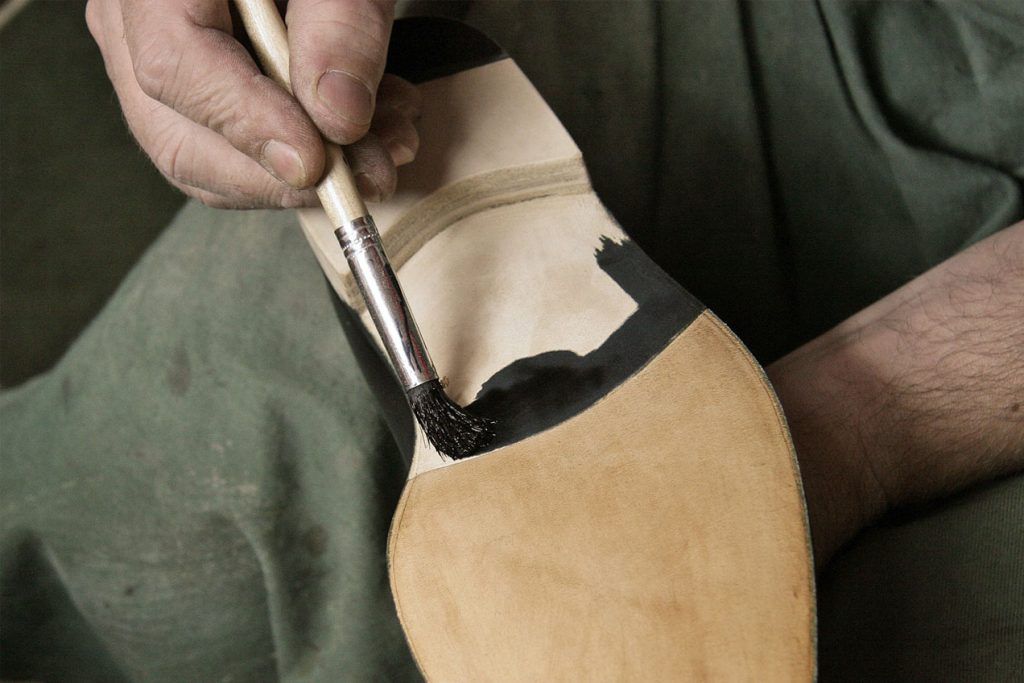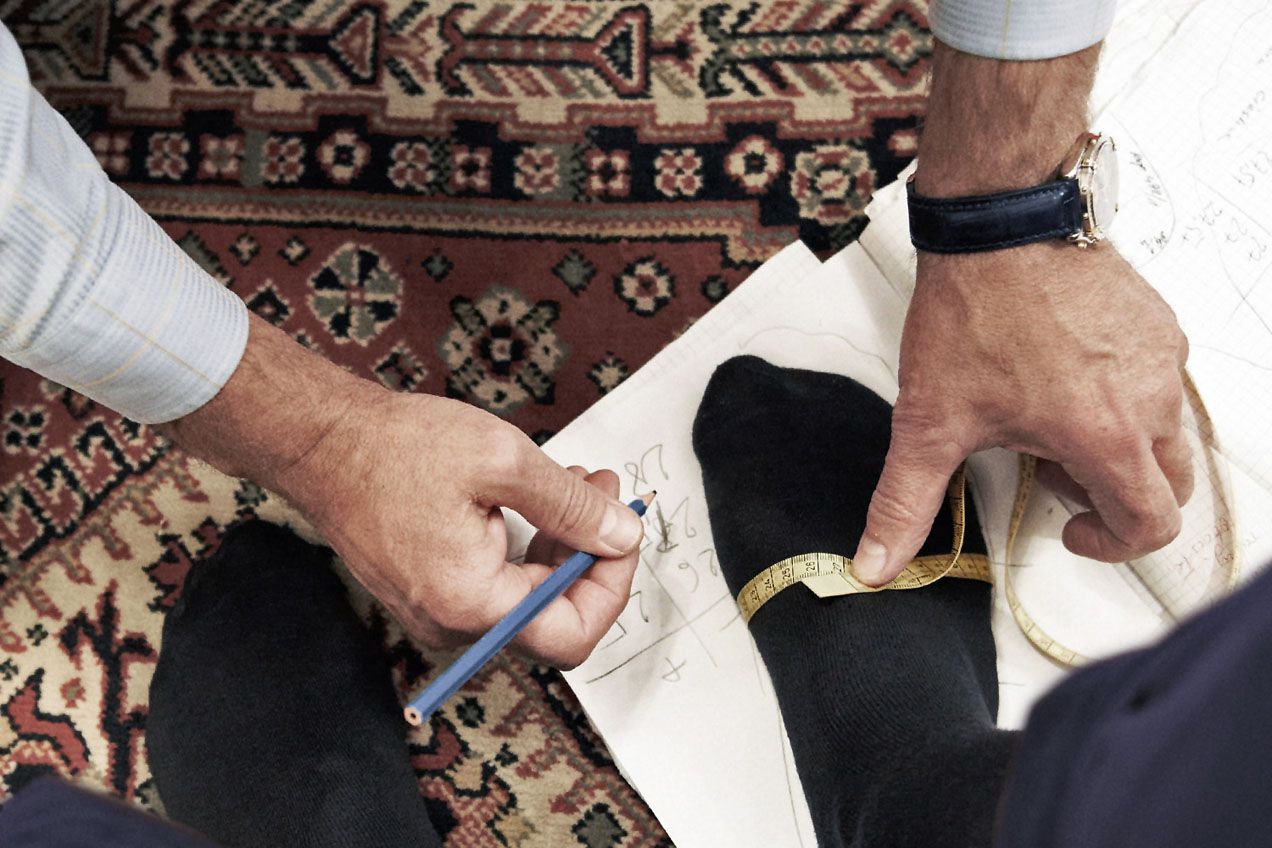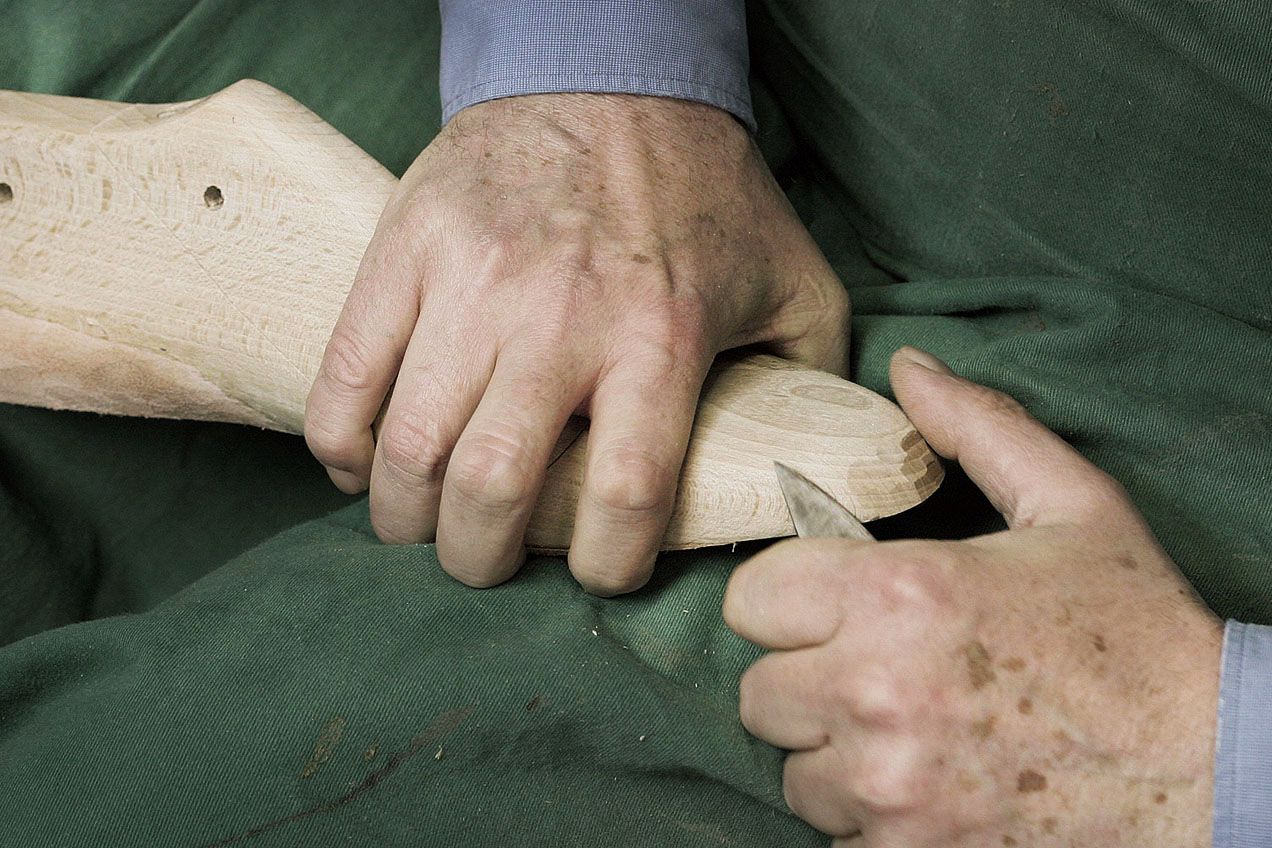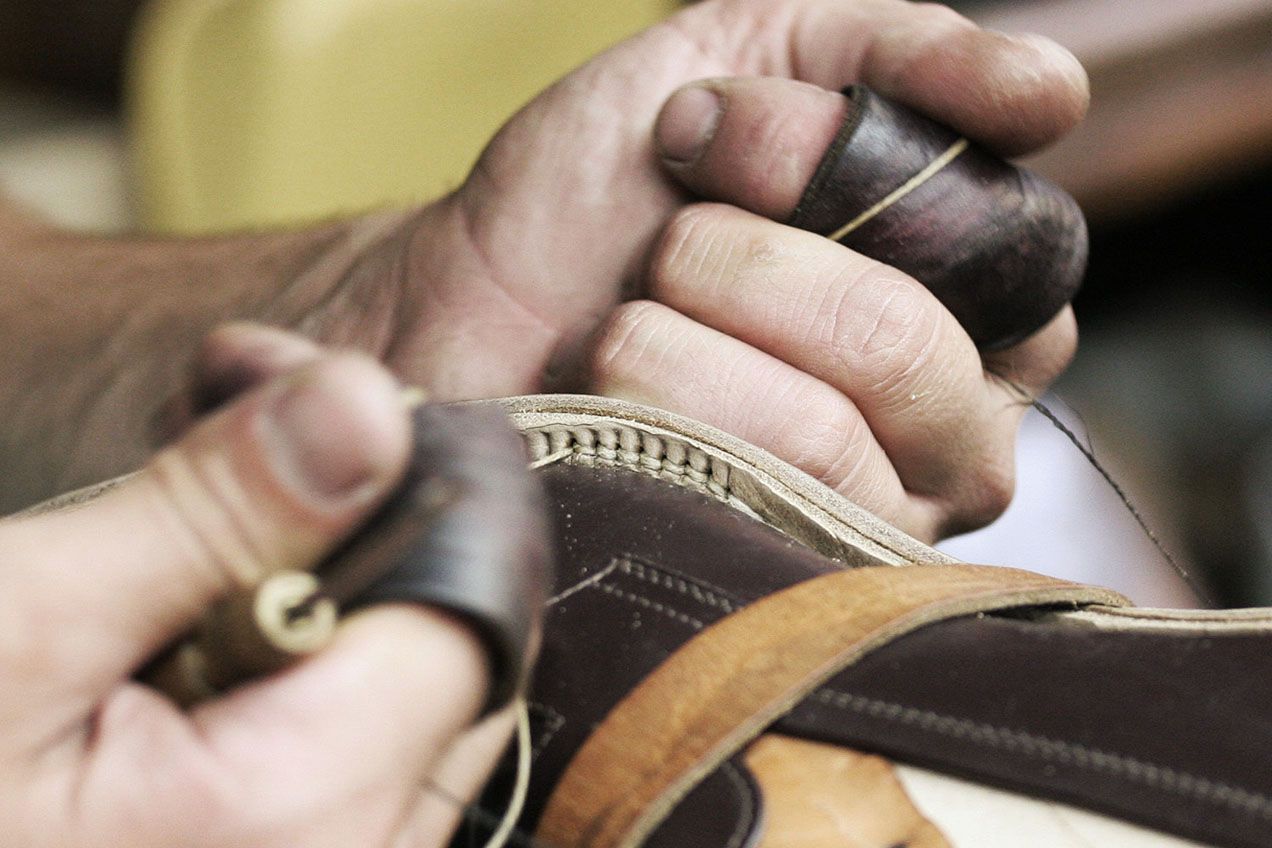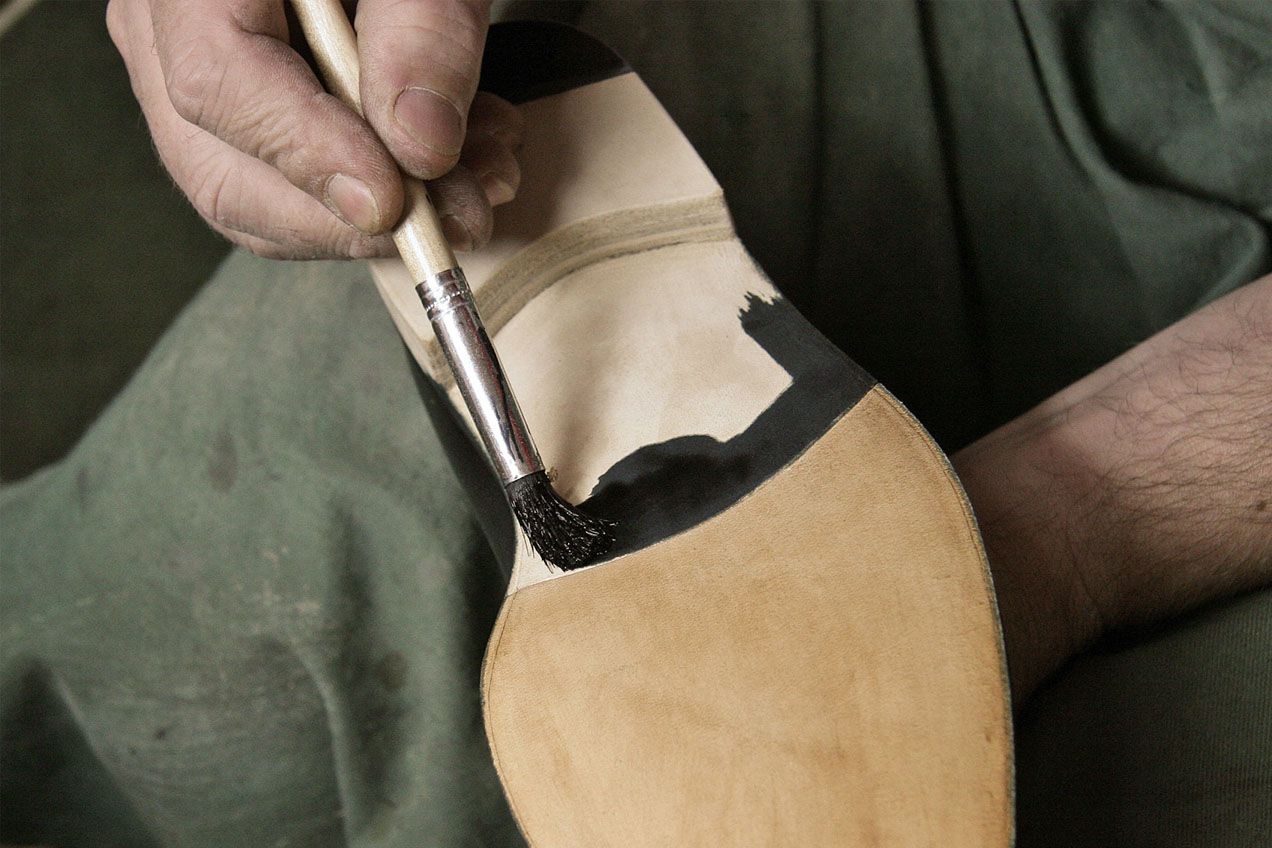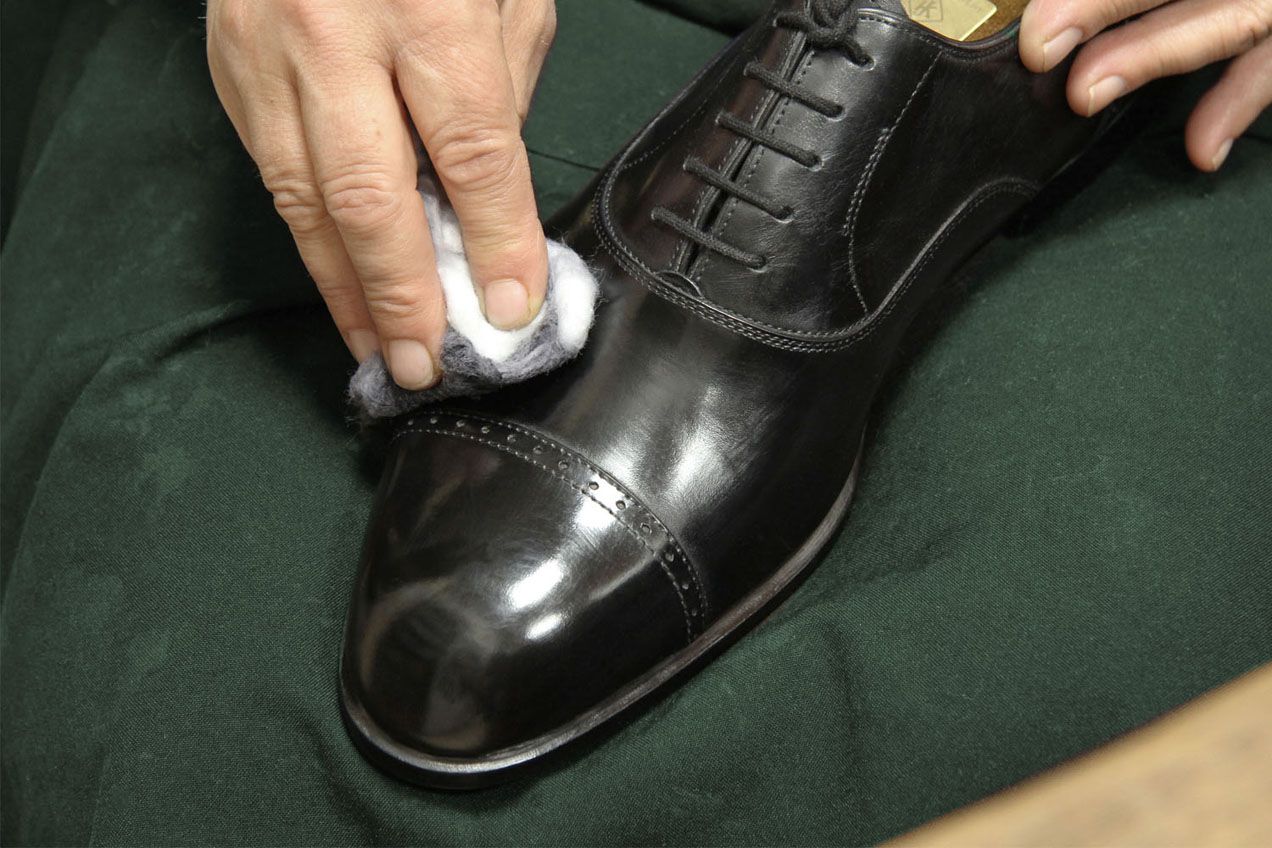Manufacturing
1. Taking measurements
We always take a customer’s measurements when they are standing; when the feet are naturally burdened, they are slightly broader than when seated. We measure both feet, because they may differ somewhat in size. If the customer is flatfooted, we slightly modify the insoles of the new shoes to reduce deformation of the foot. We take into account all of the customer’s requests concerning the shape of the new shoes.
2. Preparing lasts
Wooden lasts are prepared individually for each order. We make them out of knotless hornbeam wood. The initial shaping of the shoe trees is accomplished using a copy lathe.
The foreman then gives the lasts their finished shape using only hand tools. The outcome of the work of many people depends on how precisely this task is performed, as does the final fit of the shoes.
3. Cutting the uppers
The finished lasts, together with the leather selected by the customer, is given to the craftsman who specializes in sewing shoe uppers from soft leather. He is responsible for preparing patterns and for cutting elements of the uppers from the leather. Once these elements have been stitched together, they must be adjusted to perfectly fit the lasts.
4. Lasting
Wilgotne cholewki naciągane są na kopyta. Czynność ta powtarzana jest kilka razy, aby skóra była maksymalnie rozciągnięta i idealnie przylegała do drewna. W międzyczasie szykowane są inne skórzane elementy buta: brandzle, zakładki i podnoski.
5. Stitching welts
Welts are stitched using hemp or linen yarn that is spun into a thread consisting of several strands and impregnated with beeswax. Boar bristles are threaded into both ends of the nearly three-meter-long thread to make it easier to pull through the leather layer of the sole while sewing.
6. Doubling
Polega na mocnym łączeniu dratwą pasa z podeszwą. Poprawne wykonanie wszycia pasów i dublowania jest niezbędne dla trwałości butów oraz warunkiem aby zasadnym było nazwanie buta „szytym ręcznie”.
7. Building the heels
Once the sole leather is dried out, the next step is to build the heels. In men’s shoes, these consist of layers of thick leather measuring between 3 and 4 mm held together by wooden pegs. The final shape of the heel is achieved using a knife, rasp and sand paper.
8. Finishing
The time has come to put the finishing touches on the shoes. All of the flat surfaces of the underside of the shoes are sanded to perfection using fine-grained sandpaper and dyed the desired color using a water-based wood stain. Once they have dried, they are “ironed”, that is, impregnated and shined using hot wax. This is accomplished using tools that are heated to around 200 degrees Celsius. Once this is done, the shoes are left on the lasts for a few days until they are completely dry.
9. Polishing
Before receiving their final polishing, the shoes are removed from the lasts and placed on wooden shoe trees. Traditional shoe polishes in metal cans are best for giving grained leathers a high, resilient shine. We apply shoe polish with the aid of a piece of cotton wool, which we dampen slightly in water for the final stage of polishing.
1. Taking measurements
We always take a customer’s measurements when they are standing; when the feet are naturally burdened, they are slightly broader than when seated. We measure both feet, because they may differ somewhat in size. If the customer is flatfooted, we slightly modify the insoles of the new shoes to reduce deformation of the foot. We take into account all of the customer’s requests concerning the shape of the new shoes.
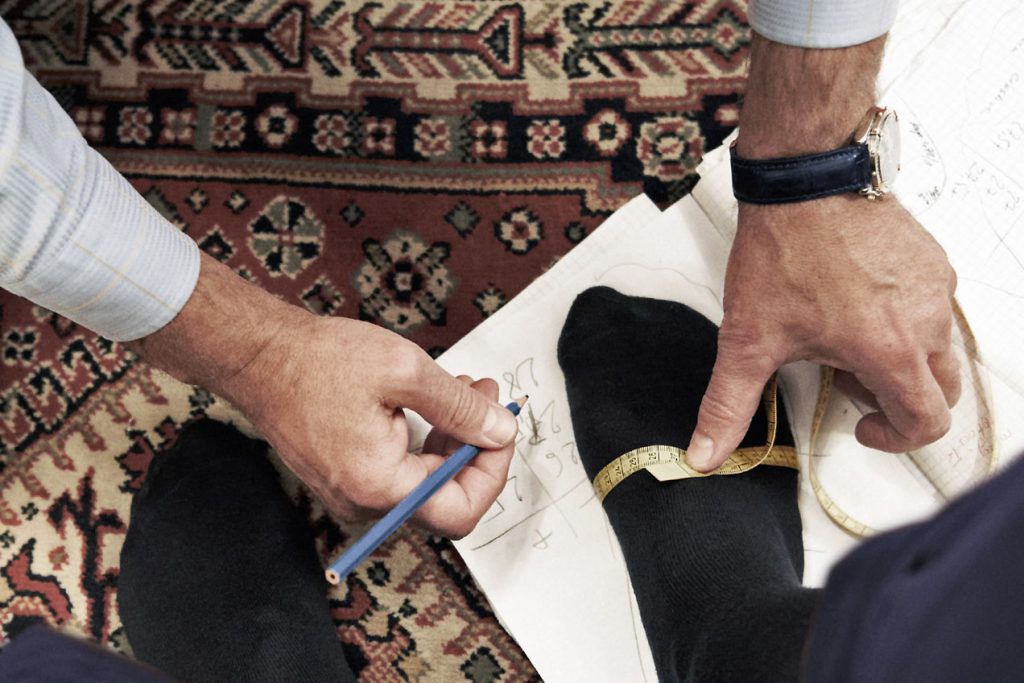
2. Preparing lasts
Wooden lasts are prepared individually for each order. We make them out of knotless hornbeam wood. The initial shaping of the shoe trees is accomplished using a copy lathe.
The foreman then gives the lasts their finished shape using only hand tools. The outcome of the work of many people depends on how precisely this task is performed, as does the final fit of the shoes.
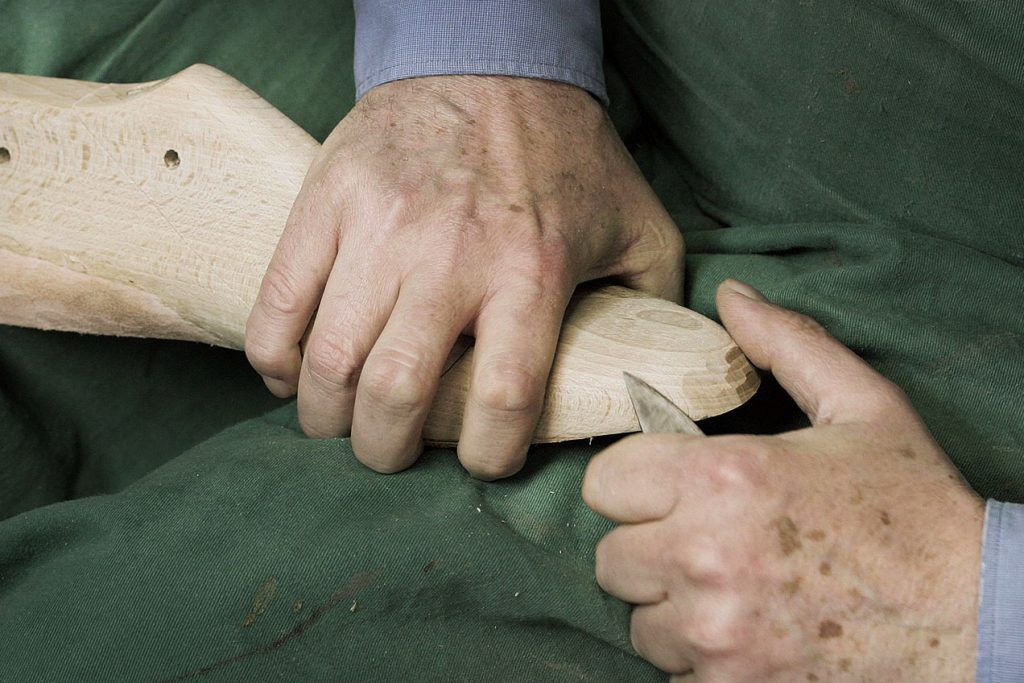
3. Cutting the uppers
The finished lasts, together with the leather selected by the customer, is given to the craftsman who specializes in sewing shoe uppers from soft leather. He is responsible for preparing patterns and for cutting elements of the uppers from the leather. Once these elements have been stitched together, they must be adjusted to perfectly fit the lasts.
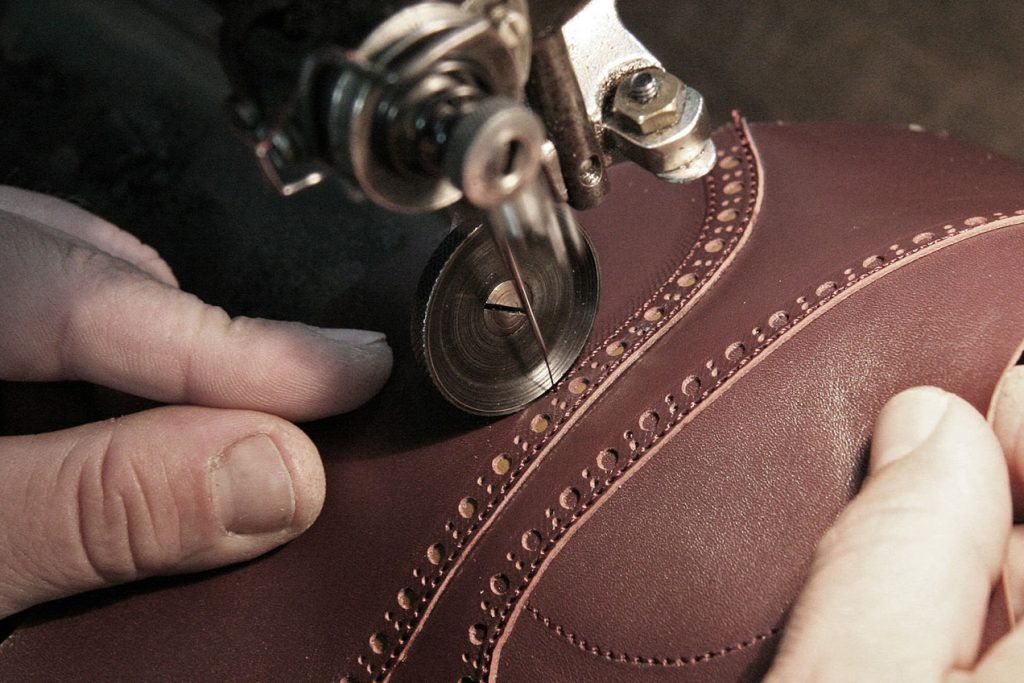
4. Lasting
The finished lasts, together with the leather selected by the customer, is given to the craftsman who specializes in sewing shoe uppers from soft leather. He is responsible for preparing patterns and for cutting elements of the uppers from the leather. Once these elements have been stitched together, they must be adjusted to perfectly fit the lasts.
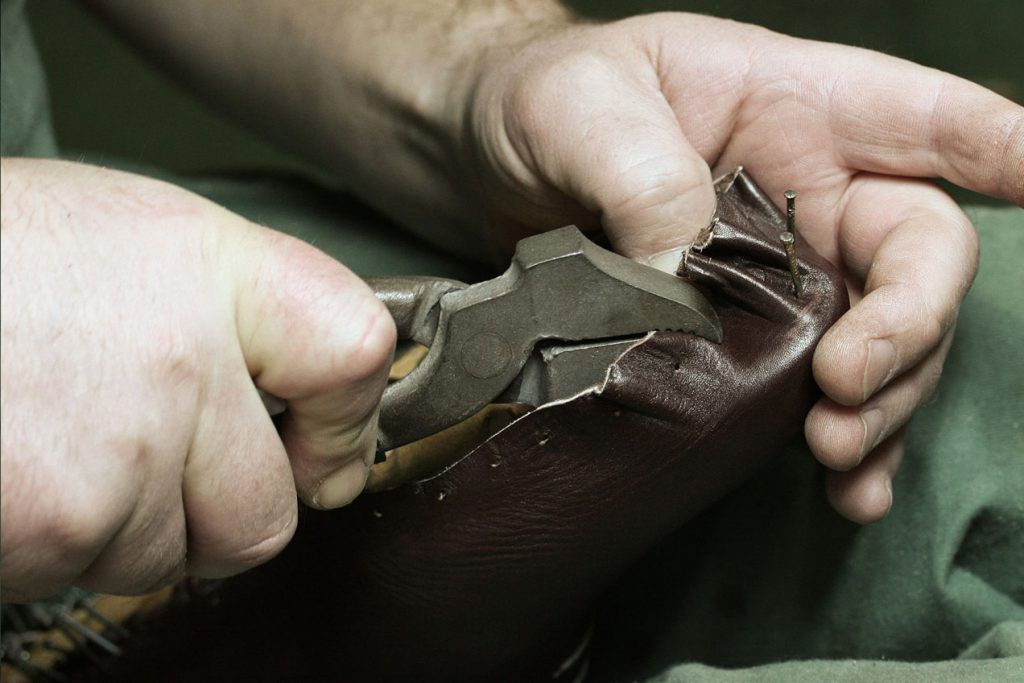
5. Stitching welts
Welts are stitched using hemp or linen yarn that is spun into a thread consisting of several strands and impregnated with beeswax. Boar bristles are threaded into both ends of the nearly three-meter-long thread to make it easier to pull through the leather layer of the sole while sewing.
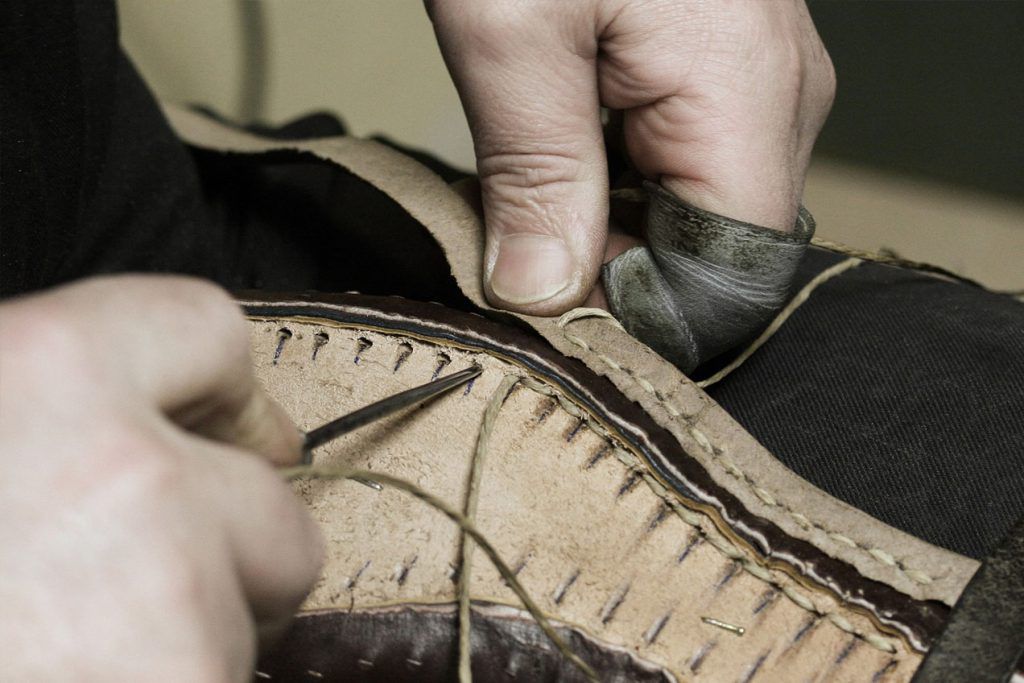
6. Doubling
Involves using thread to form a strong bond between the welt and the sole. Proper stitching of the welts and the doubling is essential to ensure that the shoes are durable and can rightly be called “hand-sewn” shoes.
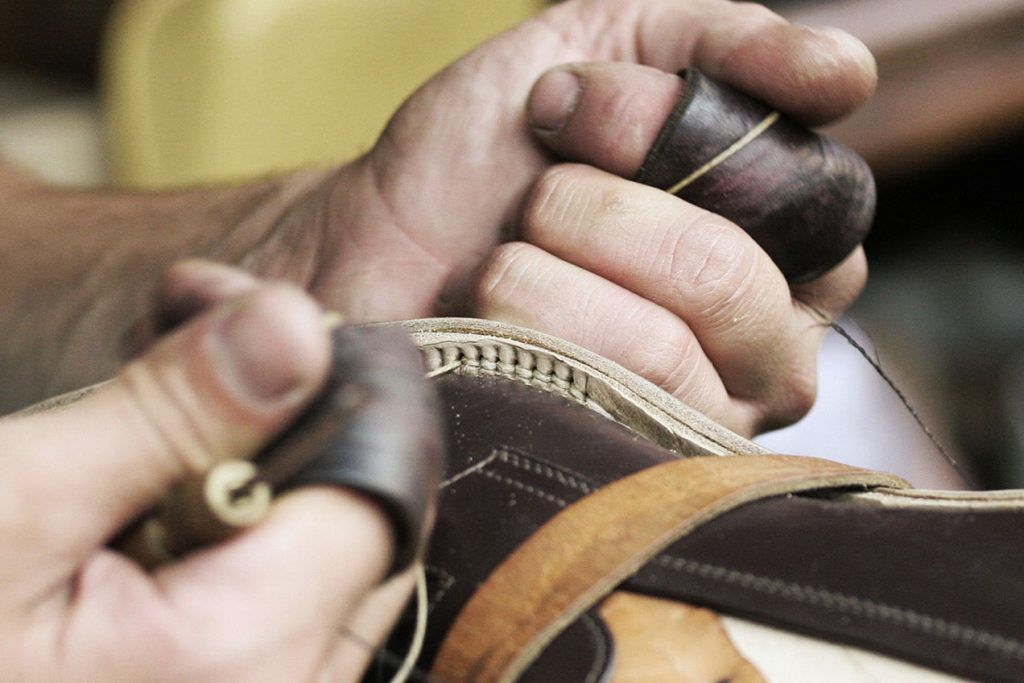
7. Building the heels
Once the sole leather is dried out, the next step is to build the heels. In men’s shoes, these consist of layers of thick leather measuring between 3 and 4 mm held together by wooden pegs. The final shape of the heel is achieved using a knife, rasp and sand paper.
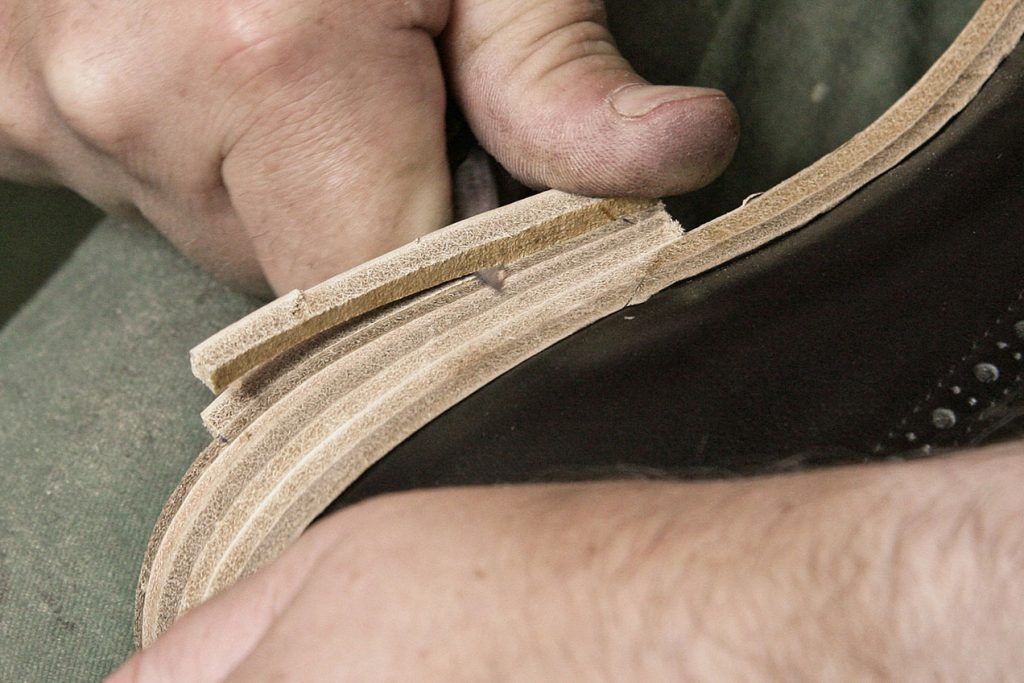
8. Finishing
The time has come to put the finishing touches on the shoes. All of the flat surfaces of the underside of the shoes are sanded to perfection using fine-grained sandpaper and dyed the desired color using a water-based wood stain. Once they have dried, they are “ironed”, that is, impregnated and shined using hot wax. This is accomplished using tools that are heated to around 200 degrees Celsius. Once this is done, the shoes are left on the lasts for a few days until they are completely dry.
